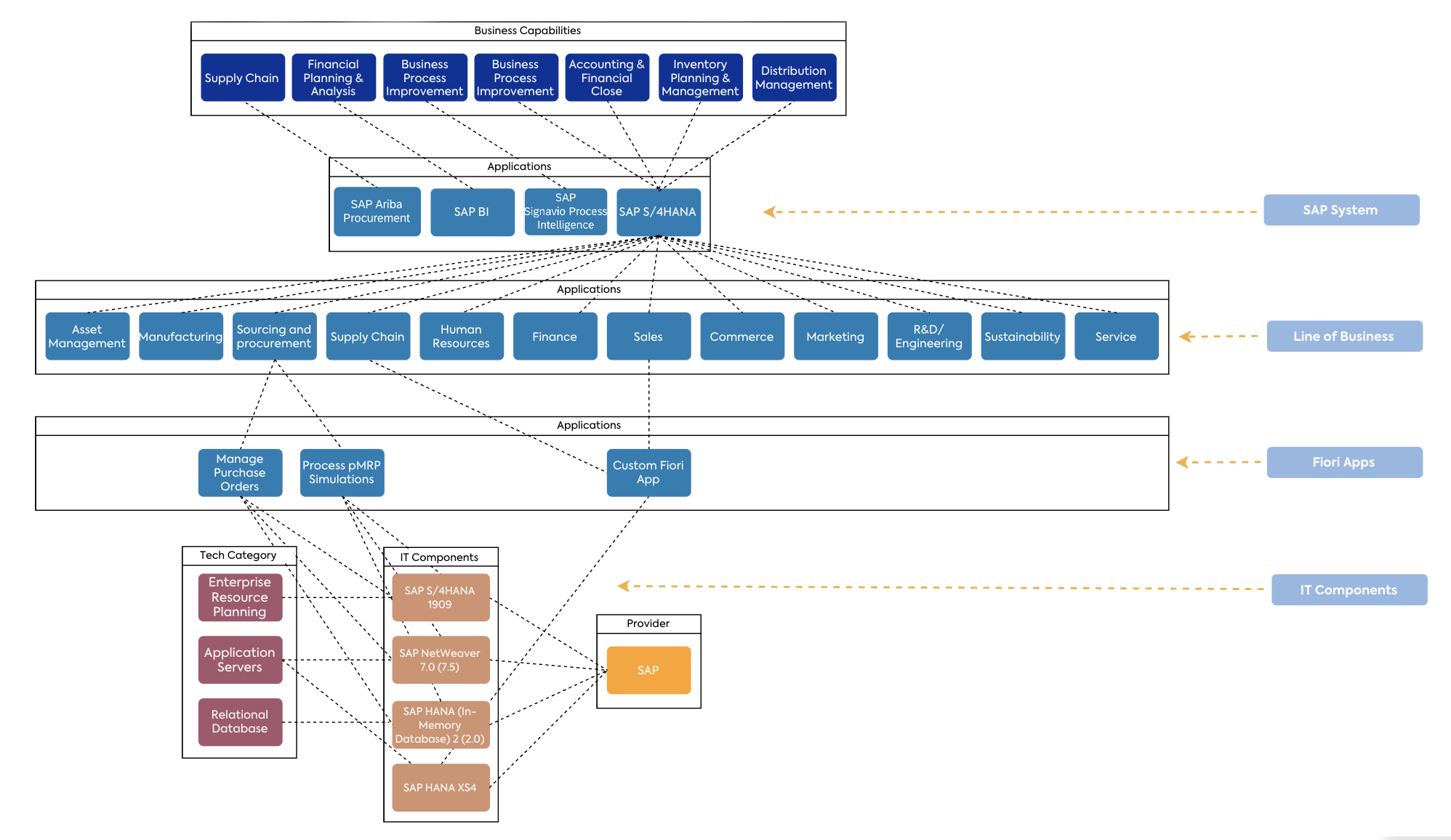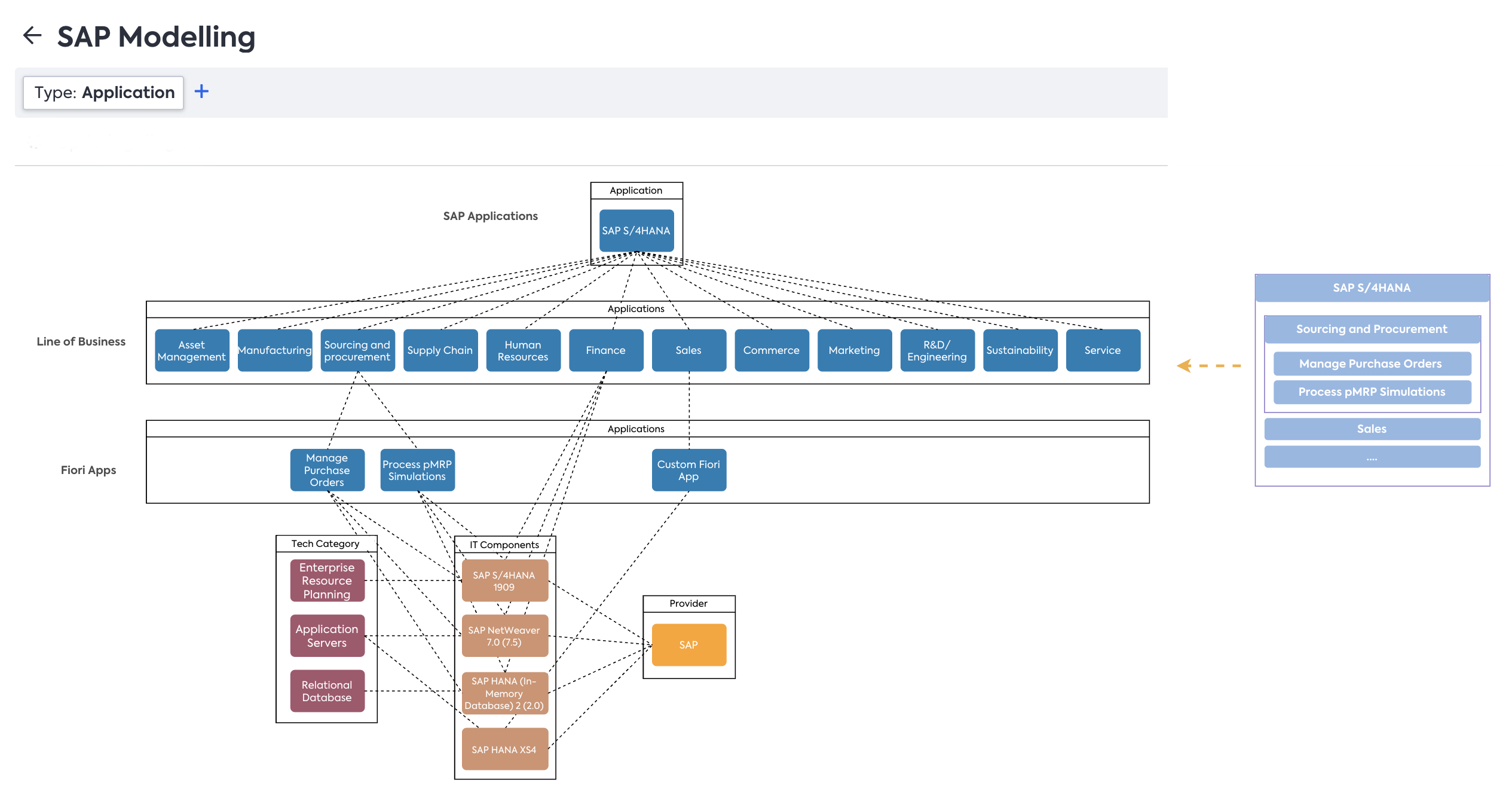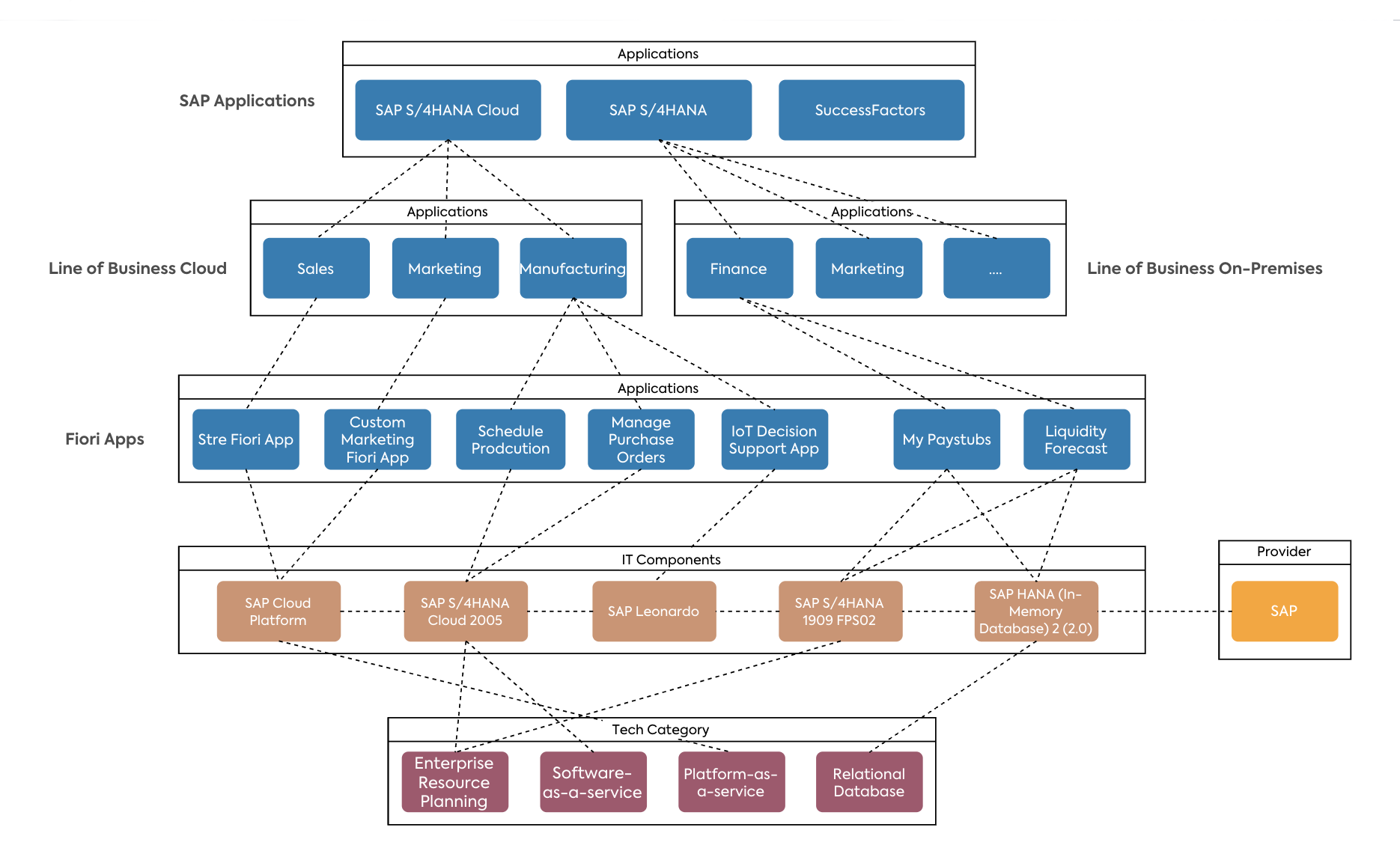Modeling SAP S/4HANA
Understand the SAP S/4HANA application structure and the key difference between modeling the S/4HANA stack and the classic SAP ERP stack, and learn how to model S/4HANA in SAP LeanIX.
Introduction
SAP S/4HANA is a next-generation ERP suite built on the SAP HANA platform, offering improved capabilities and a more streamlined architecture. Unlike the traditional SAP ERP, which employs a complex three-tier architecture, S/4HANA runs on the SAP HANA database, featuring a simplified data model. It also uses the SAP Fiori interface, providing an intuitive user experience.
A notable difference is that instead of traditional modules, SAP S/4HANA is organized into lines of business. In this guide, we provide modeling guidelines for SAP S/4HANA and outline the key differences between modeling the S/4HANA stack and the classic SAP ERP stack.
Tip
To kick-start your SAP S/4HANA modeling, leverage the SAP landscape discovery feature. It automatically discovers your SAP services and systems and lists them in an inbox for review. From there, you can select the relevant discovered items and create application fact sheets as needed. This can serve as a good starting point for your modeling. To learn more, see SAP Landscape Discovery.
SAP S/4HANA Modeling Best Practices and Guidelines
Modeling SAP S/4HANA is not too different compared to modeling SAP ERP 6.0:
- Use level-1 applications to represent S/4HANA or S/4HANA Cloud and level-2 applications to represent the lines of business, such as Finance, Sourcing and Procurement, and Marketing—similar to how SAP modules are modeled as level-2 applications in ERP 6.0.
- A key difference in S/4HANA is the addition of Fiori apps. The best practice is to only model custom Fiori applications and including them as level-3 applications in SAP LeanIX.
- Depending on the desired level of granularity, choose two or three application levels. Since S/4HANA employs a different technical backbone than ERP 6.0 (using the HANA database and given that S/4HANA environments are often cloud-based) the IT components vary from those in ERP 6.0.

Modeling SAP S/4HANA Applications and IT Components
The following diagrams show best practices for modeling different deployment models:
On-Premise Deployment

S/4HANA On-Premise Deployment
Cloud Deployment

S/4HANA Cloud Deployment
Hybrid Deployment

S/4HANA Hybrid Deployment
Modeling Fiori Applications as Part of the S4/HANA Tech Stack
With the introduction of SAP S/4HANA, Fiori applications are an integral part of the SAP landscape. SAP provides a set of standard Fiori apps that can be customized to fit your organization's needs. Additionally, you can create custom Fiori apps using different SAP programming models (RAP or CAP). To learn more about standard Fiori apps, see SAP Fiori Apps Reference Library.
Fiori applications generally fall into two categories:
- Standard Fiori Apps: These apps are used mostly as delivered by SAP, supporting standard processes and functionalities in SAP S/4HANA. They function more like components within the system.
- Custom Fiori Apps: These apps are either developed in-house or customized from the standard set. They add specific value, create custom outputs, create documents, or have a high significance in differentiating your organization.
Our best practice is to model only custom Fiori apps in SAP LeanIX as level-3 applications under the SAP line of business application. We recommend against modeling a large number of standard Fiori apps, as this adds unnecessary complexity to your application repository without providing significant value.
Updated 5 months ago
